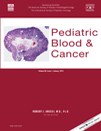Chemotherapy compliance in patients with osteosarcoma†
Nothing to disclose i.e. no conflict of interest
Abstract
Purpose
Histological response (HR) to neoadjuvant-chemotherapy (NACT) is considered as a robust prognostic marker in treated osteosarcomas. Chemotherapy compliance can affect both, dose intensity and density and may affect the final outcome in these cases. This vital aspect has been inadequately addressed and therefore merits further investigation.
Method
A retrospective study of NACT-treated osteosarcoma patients, during the year 2010 was conducted. Compliance was defined as receipt of planned cycles of chemotherapy in the planned doses, within the planned duration or up to 25% additional time. HR was assessed by grading for histological necrosis (HN). Good responders (GR) included those with tumors showing ≥90% HN.
Results
Of 124 patients, 115 were analyzed for post-NACT HR. Of the 73 (64%) compliant patients, 47 were GR and of the 42 (36%) non-compliant patients, 18 were GR. There was significant association between GR and compliance (P = 0.031). However, at a median follow-up of 7.9 months, there was no significant difference in survival between the noncompliant versus compliant group. Non-compliance was justifiable in 26 patients and not justifiable in 16 patients. Using univariate analysis, T-size, pain, performance status, albumin, LDH, and education were identified as significant factors, while in multivariate analysis, only poor performance status was identified as an independent variable for non-compliance.
Conclusions
Two-thirds patients were found to be compliant with NACT. There was a significant association between GR and compliant patients. Significant correlation between compliance and survival may be established with a longer follow-up particularly since “good necrosis” is generally predictive of good survival. Pediatr Blood Cancer 2013; 60: 41–44. © 2012 Wiley Periodicals, Inc.




